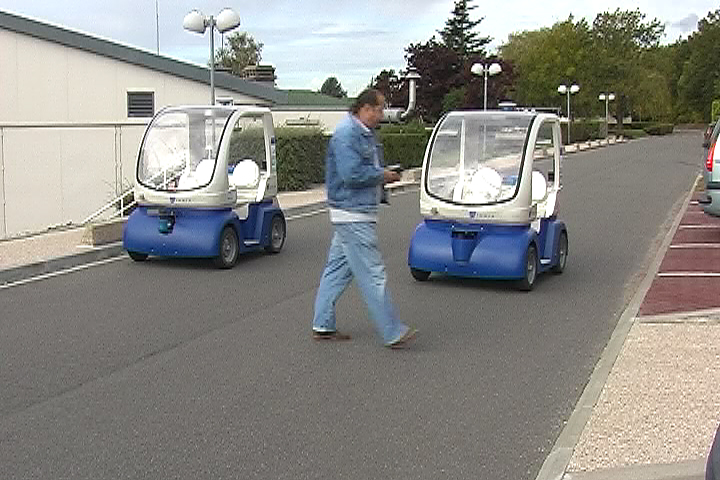
CyberCar, who’s going to drive? It travels at around 30 km/h. No driver. No fuel.
You might call it a ‘CyberCar’ – an automated vehicle, guided by three computers installed in the chassis. An engineer’s dream? It is not just a dream: CyberCar does exist. And it is environmentally-friendly and safe.
You do not need a driving license to take this car out on your own. Like a taxi, you can call it from your mobile, and it comes to pick you up and drives you wherever you desire. Afterwards, it drives away and parks itself. The novelty is that, because the service is arranged from your mobile, charges are put on your phone bill.
This new generation of CyberCar is already being used in several cities in Switzerland where you can pick up a CyberCar from the train station. It runs on an existing road infrastructure, similar to a dedicated bus-lane. The CyberCar is also popular in Germany with several thousand regular users.
These smart automobiles are equipped with sensors capable of detecting obstacles and activating the brake when necessary. The sensors are connected to three control units – acting as mini-processors – installed on the vehicle’s chassis. Two of these manage operations at the front, and the third at the rear.
There is also a computer that processes the in-coming signals from a camera and the laser range-finder, which allows CyberCar to keep on the road. All data necessary for a safe journey such as speed and sensing pedestrians is gathered, processed and communicated between the control units.
There are, however, two other alternatives for directional control. The first involves an electric wire buried in the road, which enables CyberCar to detect its position and follow a sure path. The other involves magnets, instead of wire, embedded in the road every two or three meters that act as directional guides.
Overcoming obstacles
“What is an obstacle? What about a piece of cardboard lying on the road? Can you drive over it? A person can judge whether you could or not. But for a computer, it’s difficult to identify an obstacle and how it will move” says Michael Parent, the Manager of the CyberCar project. This was the most difficult task for the development of Cybercar, which has involved 14 European industrial and academic research partners.
The researchers overcame this dilemma thanks to new technology. “Our sensors are very hi-tech. They make the CyberCar stop as soon as they detect an obstacle. For instance, if a pedestrian crosses the street in front of CyberCar, the sensors can see him and stop the vehicle at once,” explains Mikaël Kais, an electronic engineer at INRIA – the French National Institute for Research in Computer and Science Control.
Today, CyberCars appear to be the best innovation for ensuring the safety of both road-users and pedestrians. As an environmentally-friendly alternative to private cars, available to everyone, they may also reduce traffic-jams and the need for parking areas.
Pollution, noise and other traffic-related nuisances could soon be a thing of the past. The only final challenge is to overcome the protests of the automobile lobbyists.



